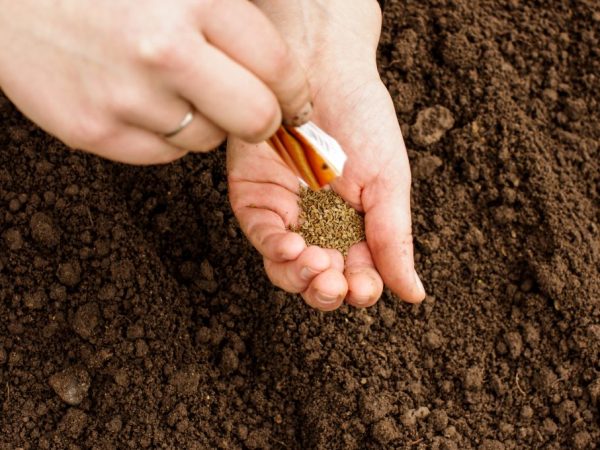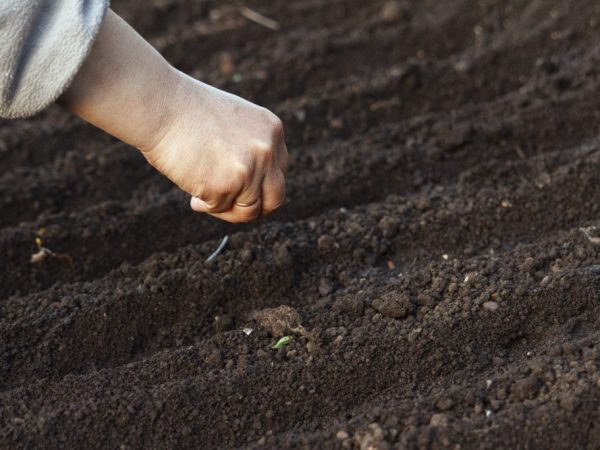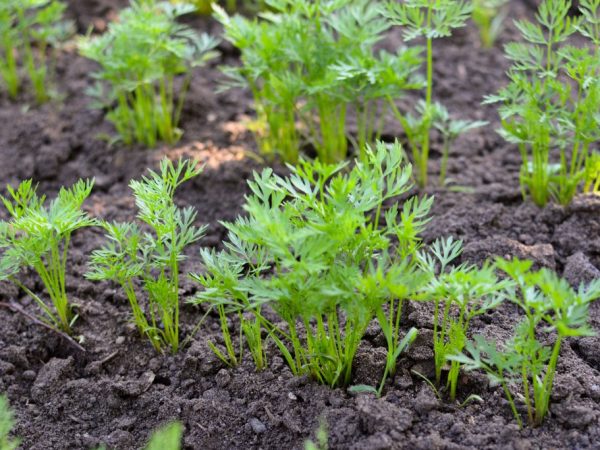Planting carrots before winter in the suburbs
Carrots are a common plant in the Umbelliferae family that are grown both for raw consumption and for cooking. The fruits are rich in vitamins and minerals, which allows them to be used for treatment and diets. To grow carrots in the suburbs, you need to choose the right variety.

Planting carrots before winter in the suburbs
Planting methods
Carrots, like beets, belong to the winter-hardy varieties, therefore, in the conditions of the Moscow region, it is better to plant before winter. Exceptions are the need for long-term storage of root crops. The fruits of podzimny sowing have a short keeping quality.
The advantages of planting carrots in the Moscow region before winter:
- Fruit ripening in early summer. Root crops grown before winter are eaten in June. This allows you to saturate the body with vitamins.
- No need to care for the crop in the fall. This frees up time for other vegetables and allows you to harvest faster.
- Saving landing area. In summer, the area occupied by carrots is vacated and used for growing other crops. Also, if fertilizers were applied under the carrots, there is no need to reuse them.
- Improved fruit quality. Root crops grown before winter have more sugar due to additional nutrients that are in the spring soil. Also, the size of the fruit is slightly larger.
Selection of varieties
To successfully grow carrots in the winter way in the Moscow region, you should choose early mid-season varieties. Bunch varieties have good yields. Also, early varieties must be frost-resistant and have a good germination rate.
Use only unprocessed seeds. It is forbidden to use pelleted planting material. When planting seeds before winter, 25% more seeds are required, since there is a risk of freezing of the planting material, which will reduce seedlings.
Seeds are not soaked before winter so that they do not sprout in the fall and die from frost. They should only overwinter in the soil, and ascend in the spring.
Suitable varieties
Carrot varieties for the Moscow region:
- Vitamin 6. A mid-early variety, the ripening period of which does not exceed 90 days. It has cylindrical root crops, the length of which reaches 14 cm. Fruit weight - 140-170 g. The variety has a high yield, with 1 sq. M. m receive up to 10 kg of fruit.
- Moscow winter. A mid-season variety, which is distinguished by its unpretentiousness to growing conditions. Ripe fruits appear 70 days after planting. The length of the fruits is 14-16 cm, and the weight is 150 g. From 1, up to 6 kg of root crops are obtained. The variety is cold-resistant and resistant to flowering.
- Callisto. Hybrid variety with medium ripening times. It has large fruits, the length of which exceeds 20 cm. It tolerates transportation well and has long storage lines. From 1 sq. m receive 4-6 kg of fruit.
- Shantane. Mid-season species with cone-shaped fruits. The length of the fruits is 14 cm, and the weight is 100-120 g. From 1 sq. m get up to 9 kg of root crops.The variety is not prone to cracking and tolerates transportation well.
- Losinoostrovskaya 13. This is a mid-season variety with soft and juicy pulp. From 1 sq. m receive 6-8 kg of fruit. Soak before planting.
- Incomparable. Mid-season variety with good yield and long shelf life. The ripening period does not exceed 100 days.
Site selection rules

The bed should be located in a sunny place.
When planted before winter, carrots develop well without predecessors. The culture is planted in its original place after 2-3 years so that colonies of carrot fly larvae do not develop in the soil.
Carrots are planted after such crops:
- tomatoes;
- melons;
- potatoes;
- cucumbers;
- bow;
- garlic.
For the plant, cultivated areas with loose fertile soil are preferred. The bed should not be shaded and quickly free of snow in the spring. It is forbidden to plant carrots in areas with a strong slope, because with a large amount of melt water, the seeds will be washed out of the soil.
Sowing preparation
Before planting carrots before winter, the site is cleaned from the remnants of previous crops. This allows you to save the garden from pests and fungal diseases.
The harvested area is dug to a depth of 28-32 cm. At this time, potash, phosphorus and nitrogen fertilizers are introduced into the soil, and also fertilized with organic substances such as compost and humus. The amount of fertilizer is selected depending on the fertility of the soil.
Fresh manure will harm carrots. If fertilizer was applied last year, the crop is not planted for another 2 years. With a lack of phosphorus in the soil, the fruits crack and form a curve.
At the beginning of October, additional loosening is carried out and furrows are cut with a depth of 4-6 cm. The bottom is tamped and left until frost begins. In bags, the soil mixture is prepared to fill the furrows, and the mulch is also prepared.
Sowing
Carrots are planted in open ground when it freezes to a depth of 4 cm. In the Moscow region, the culture is planted in late November and early December. The lunar calendar is used to determine the appropriate date.
If snow falls on the site, it is removed before sowing. A layer of soil 1-1.5 cm is sown into the furrows. The denser the soil, the thinner the lower layer.
The seeds are planted in open ground and covered with a layer of the prepared mixture. It is better to sow thickly so that the seedlings are not too rare. On top of the planting is covered with a layer of organic fertilizers.
In the first weeks, snow is removed from the plantings. They also carry out snow retention. For better preservation of the seed, mulching is used.
Spring care

Seedlings must be weeded
In early spring, when the snow begins to melt, the top layer of mulch and fertilizer is removed. To accelerate the emergence of shoots, a small greenhouse is being built. Metal arcs are placed along the furrows and covered with foil. The greenhouse is removed when the daytime temperatures exceed 15 ° C.
Watering begins in the spring when the ground dries up. If there is not enough moisture in the soil, fruits develop slowly.
When a large number of seedlings appear, weeding and loosening are carried out. This allows the top crust to be removed from the soil, which increases the access of moisture and oxygen to the root crops.
At the beginning of the growing season, nitrogen fertilizers are applied to the soil and the first top dressing is carried out. The second is carried out in a month. Organic matter is introduced only in the fall, during the digging of the soil.
The composition of the first feeding:
- potassium nitrate;
- double superphosphate;
- urea.
The composition of the second feeding:
- potassium chloride;
- mineral complex.
Thinning is carried out a week after the emergence of shoots. Also, plantings are treated with insecticides to prevent the appearance of carrot flies.
Conclusion
Carrots planted before winter are harvested in the first half of summer, and early root crops ripen at the end of July. To have a lot of fruits, you need to follow the rules of sowing and crop rotation.
When leaving, monitor the watering so that the water does not stagnate. When waterlogged, pests appear in the soil.To get rid of them, chemicals and folk remedies are used.


